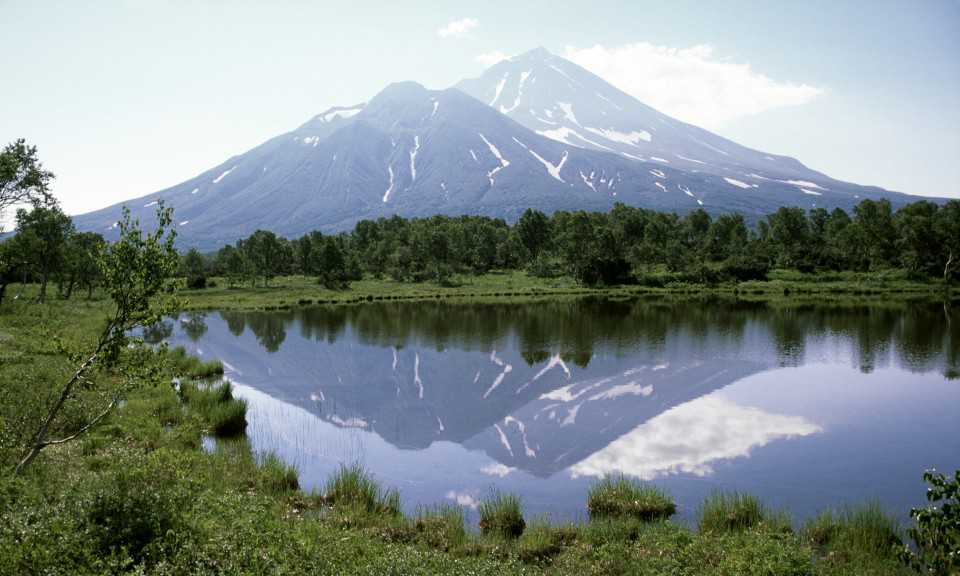Plan for China to ship Russian water by the tanker-load
08 February, 2018

The Kamchatka peninsula, home to the Khodutka volcano (pictured), is abundant in sources of freshwater. Photo: iStock / Getty
“With water in China, there are some big problems over poor water quality. So, this project makes sense. At present, the extraction of minerals and natural resources is one of the main advantages of the Russian Far East. This is what investors are interested in”
Russia has long been characterized as an exporter of oil and gas but it may just have found a new export item: drinking water.
A Chinese firm, as yet unnamed, plans to supply water from the Russian Far East to southern provinces of the People’s Republic. The company’s plans are reportedly under discussion by regional authorities in Russia.
“This will be a pilot project for the transportation of drinking water in bulk,” said Rustam Temirgaliyev, a representative of the Chinese firm eyeing the project, at a meeting with the governor of Kamchatka, Vladimir Ilyukhin. “We can call it a pilot, because nowhere else in the world was this previously done.”
It is feasible, Temirgaliyev insisted. “There are many technical nuances, but nevertheless, the Chinese side has received confirmation of project financing.”
A Chinese province may join as an investor in partnership with a Russian holding company, AO Globalnaya Bezopasnost. Financial companies are also thought to be involved.
The scope of the project – if it comes to fruition – is remarkable.
From source, the water will be transported to the Petropavlovsk-Kamchatsky port, either by trucks with water tanks, or by a specially built pipeline. From the port, it will then be delivered to China by tankers. The ships’ journey to key ports in China would take an estimated 7-10 days. Once in China, the water will be deposited into various municipal water distribution systems.
Experts note that the Russian Far East offers drinking water of superior quality, but some harbor doubts about the economic feasibility of exports.
“Water, especially drinking water, is an exceptionally rare and valuable resource; its reserves are limited,” Svetlana Mishchuk, academic secretary at Russia’s Institute for Complex Analysis of Regional Problems, Far Eastern Branch, told Asia Times. “With water in China, there are some big problems over poor water quality. So, this project makes sense. At present, the extraction of minerals and natural resources is one of the main advantages of the Russian Far East. This is what investors are interested in.”
Mishchuk said any decision to implement the joint Russian-Chinese project could have not only economic but also political motivations.
Not everyone is a believer. Dmitry Izotov, a senior researcher at the Institute of Economic Research, part of the Russian Academy of Sciences, cast doubt on whether the project would ever see completion. Multiple methods of water purification already exist, he says, adding that the transportation of water over distance is overly expensive.
“To produce water of proper quality, similar to Kamchatka water, is now not so difficult,” he told Asia Times. “The Kamchatka territory does not have a land border with China, so we are talking about sending water across the seven seas in tankers. I think that if there was real interest, you would have seen them already shipping water, for example, from Alaska, which has similar conditions to Kamchatka. In my opinion, it will be too expensive and pointless.”
Izotov noted examples of existing cross-country water sales: Malaysia delivers the resource to Singapore via pipeline; and in central Asia, Tajikistan and Kyrgyzstan have been known to supply water to Uzbekistan for agricultural needs.
Russia is among the world’s richest countries in terms of water resources. The Far East alone has about 40 discovered mineral water deposits, almost half of which are not currently in use. In terms of drinking (as opposed to mineral) water, there are even more deposits – more than 400 across the region. In China, surging industrialization in the 1990s created a serious reduction in freshwater reserves. Water quality studies of 185 tributaries of China’s main rivers show that more than half are seriously polluted. Large-scale programs are underway in the country to purify water and conserve its sources.
Last year, the Chinese company COFCO Coca-Cola Beverage Ltd announced its interest in bringing Kamchatka drinking water to China’s northern provinces. However, its plan would not require tankers or pipelines: The company is exploring the possibility of building a bottled water factory in Kamchatka.
TAG(s):
